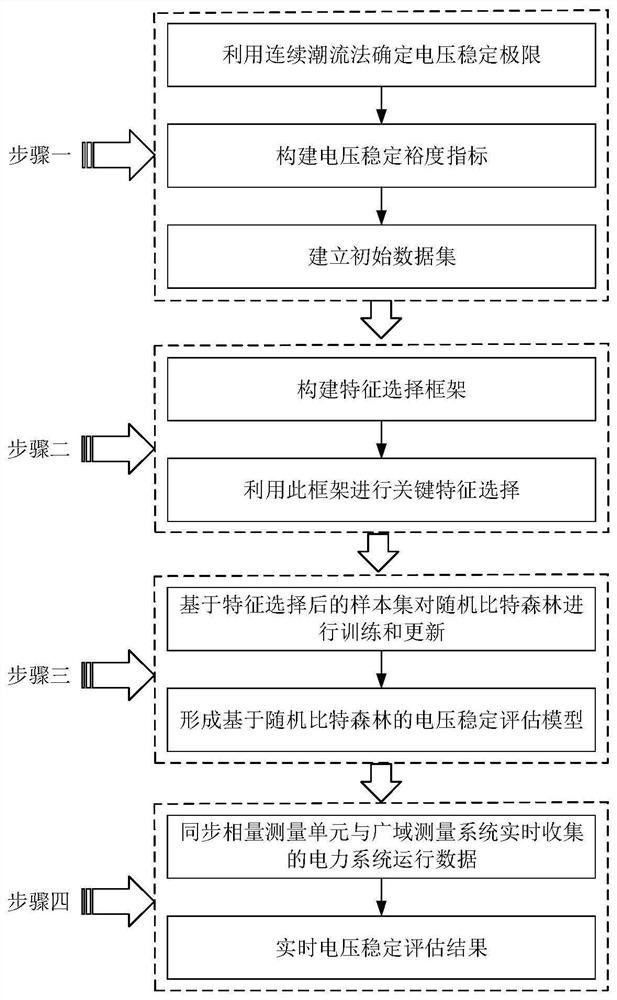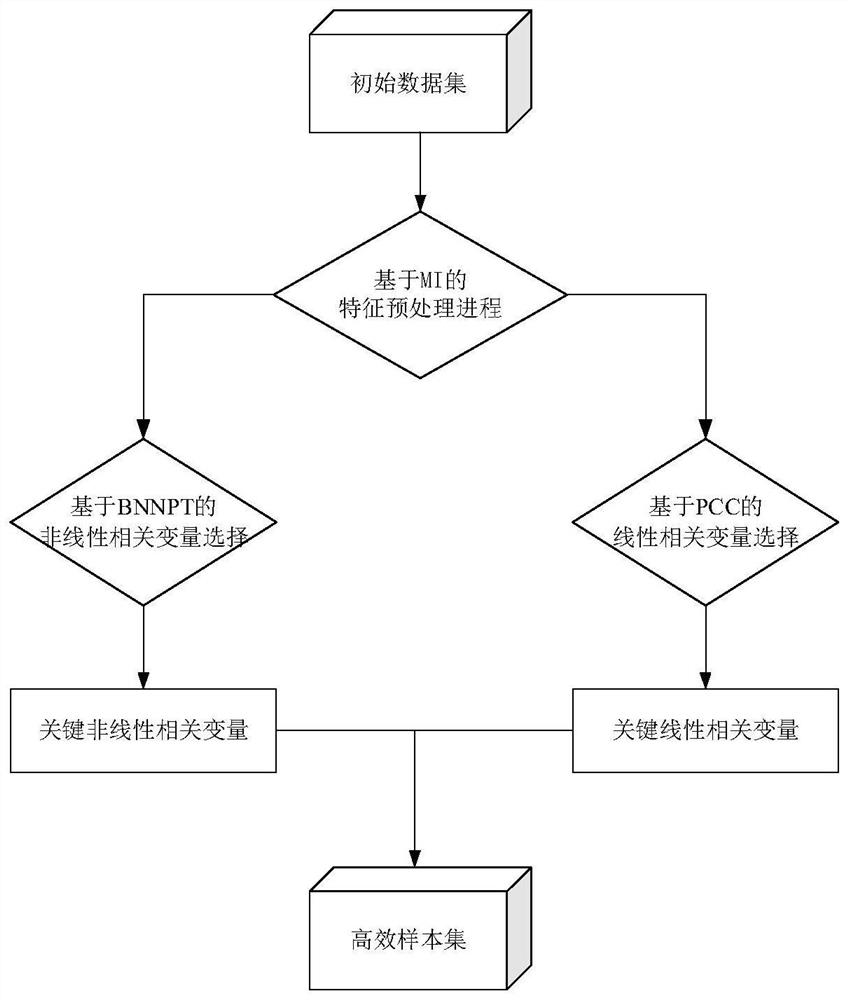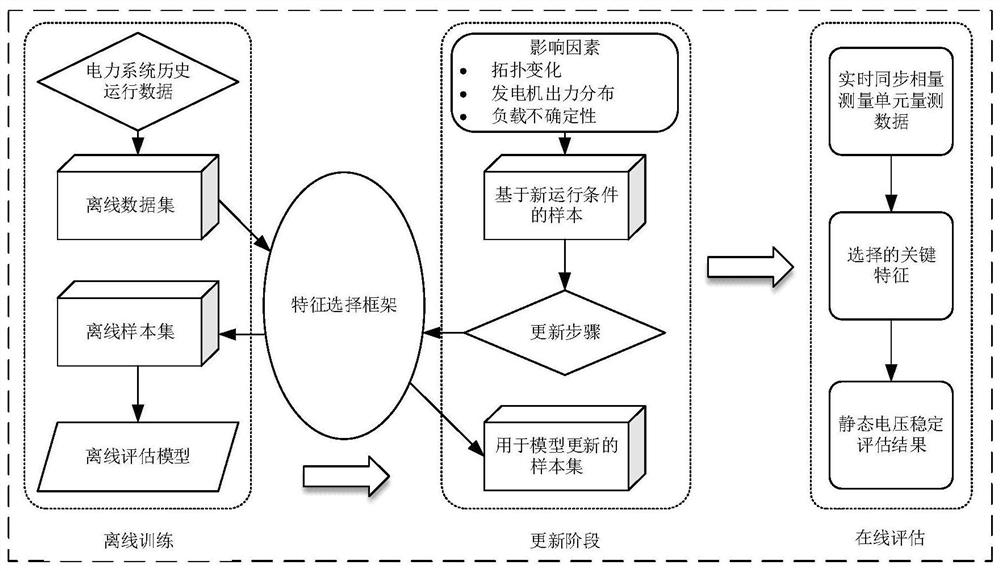A data-driven approach for static voltage stability assessment of power systems
A static voltage stabilization, power system technology, applied in data processing applications, electrical components, circuit devices, etc., can solve the problems that cannot meet the requirements of high adaptability and high precision of voltage stability evaluation methods, cannot process sample data, and sample input space. Increase and other problems, to achieve the effect of reducing redundancy, overcoming large amount of calculation, and effective feature selection
- Summary
- Abstract
- Description
- Claims
- Application Information
AI Technical Summary
Problems solved by technology
Method used
Image
Examples
Embodiment 1
[0098] Embodiment 1: the embodiment 1 that the present invention uses is based on such as Figure 4 The shown IEEE 30-node system contains 30 nodes, 6 generators and 37 transmission lines. This test includes all steps described in the method of the present invention, by testing on a computer equipped with an Intel Core i7 processor and 8GB memory, and obtained the test results. In this test, 4270 initial samples and 526 initial features were obtained, and variables with a P value of 0 and ρ being the top 5% of all variables were selected as the features. 80% of the sample set is used for training, and the remaining 20% is used for performance testing. After 5-fold cross-validation, stable results are obtained. Using R 2 and RMSE to evaluate the prediction performance, the calculation formula is as follows:
[0099]
[0100]
[0101] In the formula: Y i for the actual VSM i value; Y i * For evaluating model predictions; for Y i The average value; m is the numb...
Embodiment 2
[0114] Embodiment 2: Embodiment 2 used in the present invention is based on an actual power system with 7917 nodes, which includes 7917 nodes, 1325 generators, 5590 loads and 10796 transmission lines. The test hardware conditions are the same as in Example 1. This test obtained 10,710 initial samples and 161,109 initial features, and selected variables with a P value of 0 and ρ as the top 0.5% of all variables as the features. The test accuracy of the final model reaches R 2 = 0.9616, RMSE = 0.0163 (R 2 The closer it is to 1, the closer the RMSE is to 0, which means the higher the prediction accuracy of the model, the generally acceptable accuracy is R 2 ≥0.9, for IEEE 30-node systems, R 2 ≥0.9 corresponds to RMSE≤0.0263), it can be seen that the accuracy meets the actual needs and meets the purpose of the present invention.
[0115] The corresponding processing speed test results carried out on this system are shown in Table 1. It can be seen that the model proposed by t...
PUM
 Login to View More
Login to View More Abstract
Description
Claims
Application Information
 Login to View More
Login to View More - R&D
- Intellectual Property
- Life Sciences
- Materials
- Tech Scout
- Unparalleled Data Quality
- Higher Quality Content
- 60% Fewer Hallucinations
Browse by: Latest US Patents, China's latest patents, Technical Efficacy Thesaurus, Application Domain, Technology Topic, Popular Technical Reports.
© 2025 PatSnap. All rights reserved.Legal|Privacy policy|Modern Slavery Act Transparency Statement|Sitemap|About US| Contact US: help@patsnap.com



